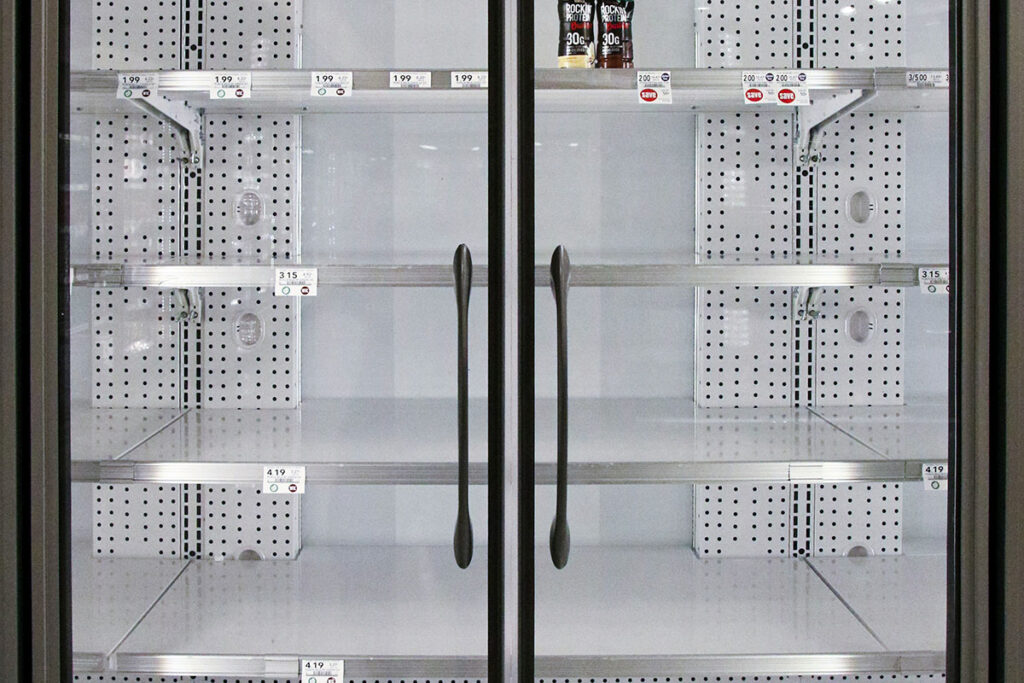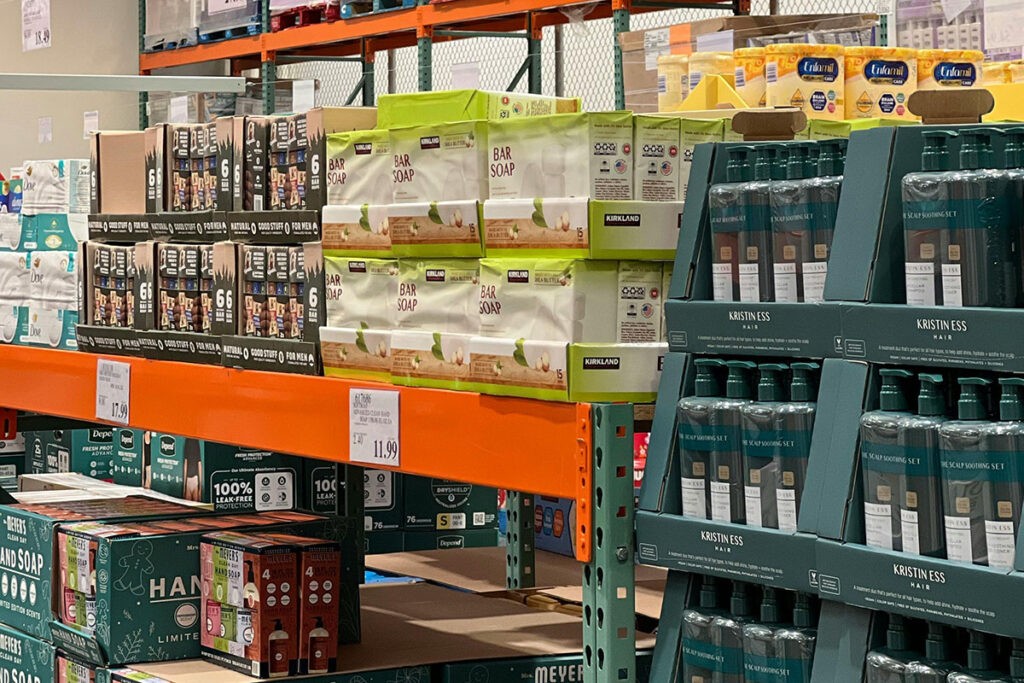Warehouse clubs like Costco and Sam’s Club are redefining grocery shopping, pushing traditional grocers to rethink pricing, merchandising, and customer experience—or risk losing relevance. Inflation and supply chain disruptions have driven consumers toward bulk purchases, fundamentally shifting expectations around value, convenience, and experience.
Scenes of empty egg shelves at Costco illustrate how consumers increasingly turn to bulk retail as a hedge against inflation and supply chain disruptions.
With grocery prices still well above pre-pandemic levels, consumers have redefined value, prioritizing cost, convenience, and quality—otherwise known as “pervasive value.” This shift has fueled warehouse club growth, as shoppers see bulk buying as a strategy for stability.

Bulk Retail’s Growing Dominance
Consumers are making more frequent, smaller grocery trips while shifting spending toward mass, club, and e-commerce channels. Retailers like Costco and Walmart are leveraging consumer data to refine inventory strategies and drive high-margin SKUs. Walmart’s recent acquisition of Vizio underscores this data-first approach, as smarter insights enhance retail experiences and sales.
The Psychological Pull of Bulk Buying
Beyond cost savings, warehouse shopping taps into a deep psychological need—security. The act of “stocking up” offers reassurance, mitigating fears of shortages and price hikes. This behavioral shift extends across generations, including Gen Z, who increasingly see bulk buying as a way to maximize value. Retailers that understand and leverage this emotional component will strengthen customer loyalty.
Challenges in the Wholesale Model
Despite its advantages, bulk buying isn’t without challenges. Consumers must manage storage constraints, while retailers navigate complex inventory logistics. Warehouse clubs are adapting with smaller-pack SKUs, expanded delivery, and enhanced perks like fuel discounts and exclusive travel deals. Traditional grocers must respond with bulk sections, personalized pricing, and differentiated in-store experiences.

Private Label as a Competitive Edge
Private-label products are no longer just a budget alternative; they are a loyalty driver. Membership-based warehouse clubs, dependent on retention, are doubling down on exclusive, high-quality store brands. Costco’s Kirkland Signature and Sam’s Club’s Member’s Mark have gained significant traction, mirroring broader industry trends. According to Jefferies, 38 of 75 tracked food categories have seen private-label market share growth, with sales projected to surpass $250 billion this year.
Aldi, a key disruptor, has built its model entirely around private label, offering high-quality alternatives without requiring bulk purchases or memberships. With plans to open 800 U.S. locations by 2028, Aldi’s expansion signals a growing consumer appetite for value-driven, private-label-focused grocery experiences.
The Blurring of Grocery and Bulk Retail
Competition between traditional grocers and warehouse clubs is intensifying. Supermarkets are introducing their own bulk-buying options, testing membership programs, and enhancing loyalty rewards to retain customers. Meanwhile, warehouse clubs are refining their approach, offering smaller packages, digital integration, and delivery options to attract a broader audience.

Omnichannel Strategies: The Next Competitive Battleground
Warehouse clubs are evolving beyond brick-and-mortar dominance by embracing omnichannel solutions. Same-day grocery delivery, AI-driven checkout experiences, and digital membership perks are reshaping the landscape. Sam’s Club’s Scan & Go checkout technology, for instance, has propelled it to the top of the American Customer Satisfaction Index, surpassing Costco in ease of shopping.
For all grocers, the future hinges on seamless integration between physical and digital channels. Retailers that combine bulk value with e-commerce convenience will hold a competitive advantage in a rapidly shifting market. To stay ahead, retailers must integrate bulk purchasing with seamless digital experiences, ensuring frictionless convenience for consumers.
Key Takeaways for Retailers
- Adapt to the new value equation. Consumers expect more than just low prices—they want convenience, quality, and flexibility.
- Leverage private label growth. Exclusive, high-quality store brands are driving loyalty and increasing margins.
- Invest in omnichannel innovation. Digital-first experiences, AI-powered personalization, and streamlined logistics are critical to staying competitive.
- Enhance in-store experiences. Traditional grocers must differentiate with immersive merchandising, targeted promotions, and frictionless checkout solutions.
The wholesale grocery model is no longer a niche—it’s a mainstream force reshaping the industry. Retailers who integrate the best of bulk, digital, and experiential retail will emerge as market leaders in this evolving landscape.
Tomorrow’s grocery consumers are looking for a layered experience. How does wholesale fit in? We break it down for retailers in our latest industry report. Download here.





